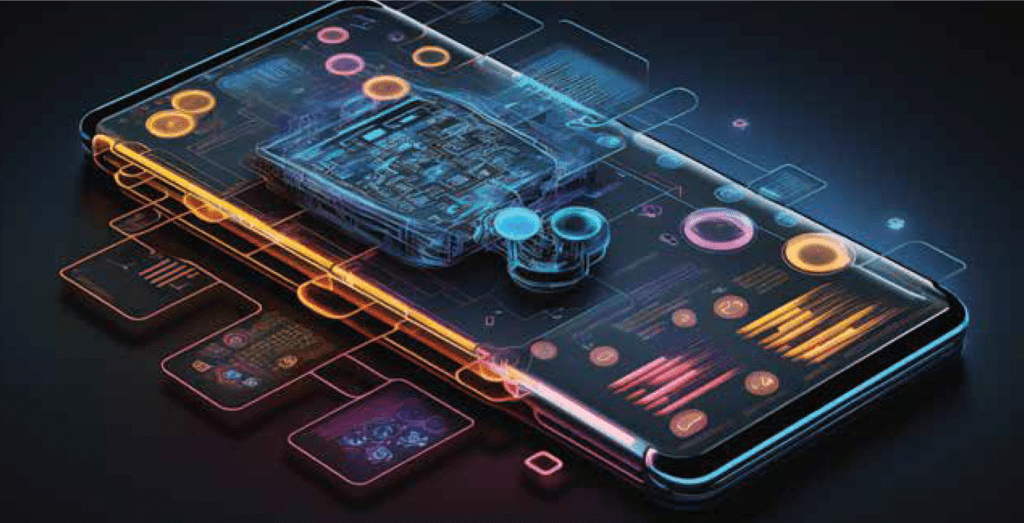The foundation of a successful mobile application lies in user experience and interface design. In the mobile app development process, Flutter stands out as an opensource UI toolkit and SDK that provides developers with extensive freedom and flexibility. With the features Flutter offers, mobile applications are not just powerful and impressive but are also developed swiftly. One of the most notable features of Flutter is its “hot reload” functionality. This feature allows changes made in the code during app development to be instantly reflected and viewed. When a modification is made in the design, its immediate application within the app accelerates the development process and enhances efficiency.

Flutter utilizes ‘widgets’ as fundamental building blocks in interface design. These widgets represent UI
elements and enable the creation of complex interfaces by combining different components. Flutter’s rich widget library supports various UI elements, ranging from buttons to animations, icons to switches.
Flutter’s support for Google’s Material Design and Apple’s Cupertino design languages allows applications developed with it to have a native appearance on both Android and iOS platforms. Additionally, Flutter boasts a powerful ‘Custom Paint’ library that enables users to add custom visual
elements and animations. This feature elevates the application beyond the ordinary, providing users with a visually enhanced experience. Ensuring proper display on devices with various screen sizes is crucial. Flutter offers a structure that adapts to the screen sizes of all devices, ensuring users have a consistent experience regardless of the device, be it a phone or tablet, Android or iOS.

Flutter’s support for Google’s Material Design and Apple’s Cupertino design languages allows applications developed with it to have a native appearance on both Android and iOS platforms.
In Flutter, we have various widgets for layout and positioning tasks. Row, Column, and Stack are layout widgets that enable organizing the application’s layout. Widgets like Container and Center assist in adjusting the size and position of elements. We use SizedBox and Spacer to manage spaces and gaps. Padding, on the other hand, is an ideal widget for adjusting content from the edges. Expanded fills the available space.
The AppBar is the bar located at the top of the application. In this area, various features such as the
application name, page titles, various icons, smallscale logos, buttons, back buttons, and search tabs
are placed. The main content of the application is coded in the body. When designing an application, widgets that facilitate user interaction and provide feedback are frequently used. Text and ElevatedButton enrich the user interface. TextField enables user data input. Widgets like Switch, RadioButton, CheckBox allow users to control options. ProgressBar and Slider are suitable for displaying progress status and selecting values.
Flutter uses StatelessWidget and StatefulWidget structures when creating pages.
Widgets that execute only once are StatelessWidget.
In Flutter, when creating a page, we use the StatelessWidget and StatefulWidget structures. Widgets that run only once are StatelessWidget. The build method runs only once. With the State property, changes cannot be made repeatedly in the interface. For example, we can show widgets like Text, Column, Row, Container. In a page created with the StatelessWidget structure, the widget’s state cannot be changed. Most of the time, we’ll need to make changes repeatedly in the interface. If we need a page where the interface needs to be updated, that page should be created as a StatefulWidget. In a StatefulWidget, the build method runs again with every change in the interface. The method that
triggers the rebuild is the setState method. To use the State property, interaction with two classes is necessary. These are the class that takes StatefulWidget property and the class with State property. Examples of StatefulWidgets include interactive widgets that can change their state, such as ElevatedButton, TextField, Checkbox. Additionally, non-stateful widgets can be given statechanging functionality hrough the GestureDetector structure. In some applications, scrolling through a page might be necessary, which is where ScrollView is used.
DropDownButton allows users to select options from a dropdown menu. TeRlUGe Through GestureDetector, user interactions with the screen are detected. Image. asset and Image.network are structures that enable the addition of visual elements. Additionally, widgets like SnackBar, AlertDialog, Card, and PopupMenu are used to inform and engage with users. SnackBar is ideal for displaying temporary messages. AlertDialog is used to present information or options to the user. Card is useful for organizing and displaying information. PopupMenu, on the other hand, is another widget used to provide choices to the useruser.
As a result, developers using Flutter have a robust toolkit for mobile app design, providing users with an impressive experience. Flutter’s flexibility and rich features significantly enhance the mobile app development process, aiding developers in creating more creative designs.



